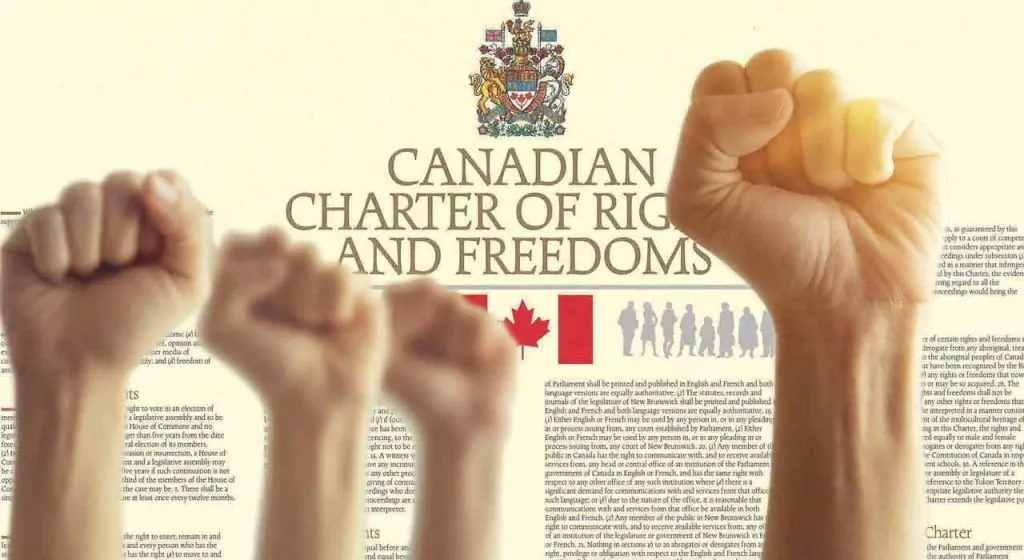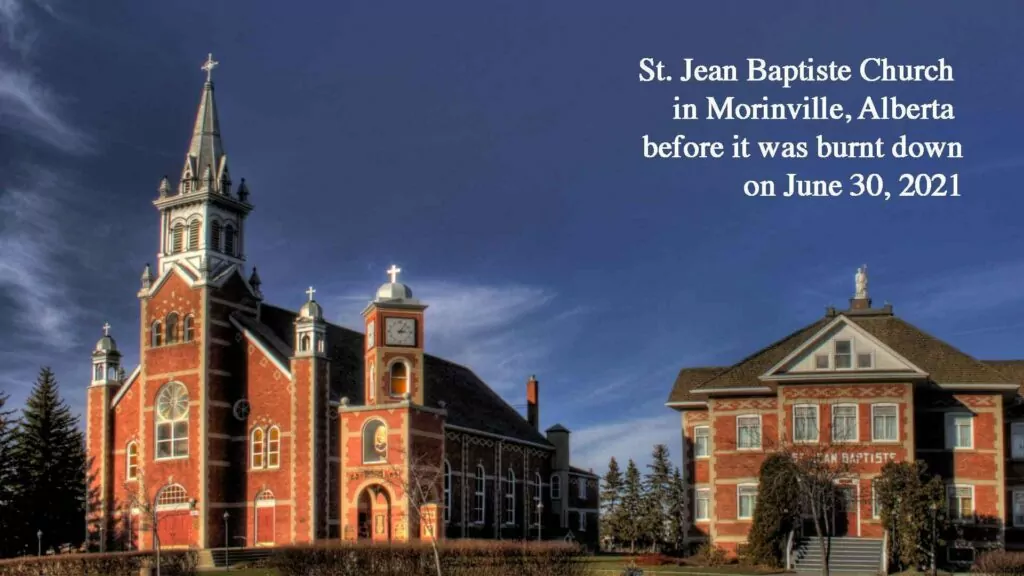When we speak of a political “revolution,” we usually think of a violent event that replaces one political system with another. Among the best known revolutions are the French Revolution of the late eighteenth century and the Russian Revolution of 1917. Canada, thankfully, has never experienced anything of this sort. Nevertheless, Canada did experience a dramatic change in its political system in 1982.
In that year, Canada’s constitution (the British North America Act, or BNA Act of 1867) was patriated from Great Britain, and the Constitution Act of 1982 was added to the constitution. The latter Act included the Charter of Rights and Freedoms. It seems to me that the adoption of the Charter amounted to a political revolution.
For most people, talking about the constitution is probably rather boring. It appears to be just a dull legal document with little relevance for day-to-day life. But what if a change in the constitution initiated the uprooting of the original underlying Christian basis of our society? Wouldn’t that affect the day-to-day life of Canadian Christians? This is indeed what has been happening in Canada for a few years now. The government of Prime Minister Pierre Trudeau staged a non-violent revolution in 1982, and although Trudeau himself is now dead, the implications of his revolution continue to work themselves out in our political and legal systems.
Two approaches
Historically speaking, there have been two major approaches to protecting rights and liberties in liberal democratic countries such as Canada. One is the British parliamentary model, and the other is the American separation of powers model. These models, and their relevance for Canada, are discussed in a lengthy article by Prof. Ted Morton, of the University of Calgary, entitled, The Living Constitution (contained in Introductory Readings in Canadian Government & Politics R. M. Krause and R. H. Wagenberg, ed., second edition, 1995).
Morton summarizes the differences between the two approaches this way:
The American model is ultimately based on and organized by a single document – a written constitution. By contrast, the Westminster model is based on an unwritten constitution – a combination of historically important statutes, the common law tradition, and numerous unwritten conventions and usages. The second difference is that the written constitution of the Americans includes an enumeration of the fundamental rights and liberties of the individual against government, known collectively as the Bill of Rights. While individuals enjoy basically the same rights and freedoms under the British parliamentary model of democracy, they are not spelled out in any single basic document of government – that is, they are not constitutionally entrenched.
In the American system, the courts play a much larger political role since they can be appealed to in order to enforce explicitly enumerated rights against the government. In the British system, however, there is an understanding that Parliament is the supreme political institution, and that the courts are primarily to interpret the laws that are passed by Parliament. Thus court challenges against the government are usually ineffective in the British model.
With the exception of its federal structure (i.e., separate federal and provincial governments), Canada’s constitution was based on the British model until 1982. “Accordingly, Canada until very recently followed the British approach to the protection of civil liberty: parliamentary supremacy, the rule of law, and the conventions that support them.”
While it is probably natural to think that the American approach to protecting rights would be more effective, since there is an explicit declaration of rights, this is not necessarily so. A comparison of Canadian and American history does not show that rights were better protected under the American system than under Canada’s British-style system. Think of the treatment of black people in the southern states, for example. So it cannot be argued that Canada needed the Charter of Rights to protect the otherwise threatened rights of citizens.
Bill vs. Charter of Rights
In 1960 the Canadian government adopted a Bill of Rights, but since it was just a simple piece of regular legislation, it had virtually no noticeable effect on Canada’s political system. The Charter of Rights is an entirely different affair than the 1960 Bill of Rights. “The adoption of a constitutionally entrenched Charter of Rights fundamentally altered the Canadian system of government by placing explicit limitations on the law-making power of both levels of government. Parliament was no longer supreme; the constitution was.”
Morton notes that the exception to this is section 33 of the Charter which allows governments to pass legislation that violates certain sections of the Charter, although only under certain conditions. This is known as the “notwithstanding clause.” However, this clause is rarely used (being widely viewed as illegitimate) and is therefore unlikely to play much of a role in Canadian politics.
It is important to note, as Morton does above, that the Charter “fundamentally altered the Canadian system of government.” This was the initial revolutionary change. The effects of the revolution primarily work themselves out through court decisions, especially decisions by the Supreme Court of Canada. The courts interpret the Charter and it is through this role that they are implementing the changes required to complete the revolution.
The opposition loves it
The Charter of Rights was not adopted to codify and protect the existing rights and freedoms of Canadian citizens, but instead to bring about important political changes. Some leftwing scholars have noted (and celebrated) the fact that the Charter promotes “egalitarianism,” i.e., the modern notion of social equality. Kathleen Mahoney, a prominent feminist law professor at the University of Calgary, points this out in an article in the 1992 Winter issue of the New York University Journal of International Law and Politics. She states:
It is my view that the Supreme Court of Canada, to quite a remarkable degree, has recognized the egalitarian challenge the Charter presents. In the past few years, it has launched a promising new era for equality jurisprudence quite unique in the western world. The equality theory it has developed goes far beyond that which underlies constitutional law of other western societies including Europe and the United States.
A cruder way of saying this is that Canada’s Supreme Court is further to the left than any other supreme court in the West.
The Charter, then, contains within it the seeds for dramatic left-wing change in Canada. Mahoney refers to “the transformative potential in the Charter, a potential to achieve social change towards a society that responds to needs, honors difference, and rejects abstractions.” Note again that the Charter has a “transformative potential . . . to achieve social change.” You can be sure that she is referring to left-wing social change. A revolution, in other words.
The constitutional change of 1982 fundamentally altered Canada’s political system. The adoption of the Charter of Rights and Freedoms was the most significant component of this change. As a result of court decisions interpreting the Charter, Canada’s abortion law was struck down, homosexual rights have been greatly expanded, and other left-wing policies have been advanced as well. Canada would likely be taking a somewhat left-wing path even without the Charter, but the implementation of the Charter has greatly strengthened and accelerated this trend. Left-wing social change has effectively been institutionalized by the Charter. Canada’s revolution was not a violent one, but it was a revolution none the less.
This article first appeared in the February 2002 issue.
Postscript: A sampling or revolutionary rulings
The New Constitution Versus the Fourth Commandment
“R. vs. Big M Drug Mart” (1985)
This decision by the Supreme Court struck down Canada’s “Lord’s Day Act.” This Act had placed some restrictions on business activity on Sundays. A business in Calgary that had been charged under the Act (for remaining open on Sundays) claimed that it violated the Charter of Right’s section 2 “freedom of religion” clause. The Supreme Court agreed, and struck down the Act. Because the Lord’s Day Act was based upon Christian beliefs, and therefore entailed government enforcement of a Christian teaching (i.e., not working on the Lord’s Day), the Court said it violated the Charter’s guarantee of religious freedom for non-Christians.
The New Constitution Versus the Sixth Commandment
“R. vs. Morgentaler” (1988)
In 1969 abortion was legalized to a certain degree in Canada. A woman could have an abortion in a hospital if her request for an abortion received the approval of the hospital’s therapeutic abortion committee (TAC). To be sure, a large number of abortions were conducted under this provision, but it did nevertheless limit where abortions could take place and who could do them. Infamous baby-killer Henry Morgentaler challenged the restrictions on abortion. To make a long story short, he won the case, and the section of Canada’s Criminal Code limiting abortion was struck down. Although some of the Supreme Court judges offered differing opinions as to why they sided with Morgentaler, the main thrust of the decision was that the procedures involving the TACs violated the section 7 Charter right to “security of the person.” Canada was left with no legal restrictions on abortion whatsoever.
The New Constitution Versus the Seventh Commandment
“Vriend vs. Alberta” (1998)
Delwin Vriend worked for King’s University College in Edmonton. Because Vriend was openly homosexual, and therefore in clear violation of the College’s Christian code of conduct, he was fired. However, he could not appeal his dismissal to Alberta’s Human
Rights Commission because the province’s Individual Rights Protection Act (IRPA) did not include sexual orientation as a protected category. Thus Vriend challenged the IRPA as violating the Charter’s section 15 equality rights provision for not protecting sexual orientation. The Supreme Court agreed, and ruled that the failure to include sexual orientation as a prohibited ground of discrimination was unconstitutional. This clearly extended the scope of homosexual rights.















